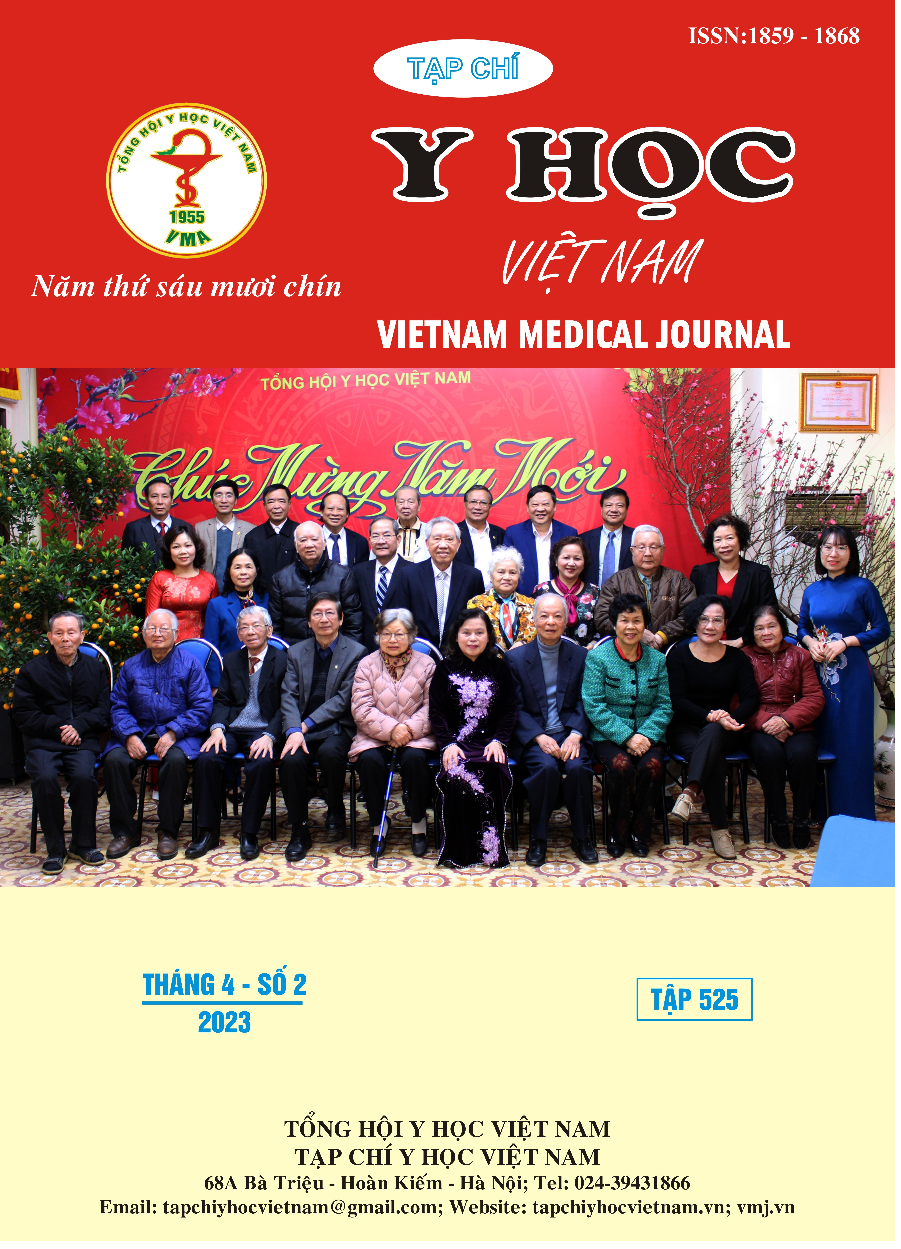RESULTS OF PRESERVING FACIAL NERVE FUNCTION IN SURGERY VESTIBULAR SCHWANNOMA USING NEURO INTRAOPERATION MONITORING AT HANOI MEDICAL UNIVERSITY HOSPITAL
Main Article Content
Abstract
Objectives: To evaluate the effectiveness of preserving facial nerve function in surgery of vestibular schwannoma using neuro intraoperation monitoring. Materials and methods: The patient underwent surgery for vestibular schwannoma at Hanoi Medical University Hospital using the NIM system. Results: The mean age of the study group was 34.5±10.6. Men accounted for 38.9%, women accounted for 61.1%. The main clinical symptoms are dizziness (16/18) and gait disturbance (13/18). On magnetic resonance imaging, there are 5 patients with T3 level, 13 patients with T4 level. There are 3/5 patients with T3 having almost all tumors, 2/5 taking part of the tumor. 7/13 T4 patients took most of the tumor, 6/13 took part of the tumor. There are 3/18 patients with bleeding complications after surgery. For grade T3 tumors, there are 2/5 cases without facial paralysis, 2/5 cases of grade II facial paralysis, 1/5 cases of grade III facial paralysis. For grade T4 tumors, there were 3/13 cases without facial paralysis, 3/13 cases of grade II facial paralysis, 6/13 cases of grade III facial paralysis. Conclusion: Among the factors related to the degree of facial paralysis after surgery for chordoma VIII, the tumor size plays the most important role. The larger the tumor, the higher the rate of facial paralysis after surgery
Article Details
Keywords
vestibular schwannoma, facial nerve, neuro intraoperation monitoring
References
2. Gormley WB, Sekhar LN, Wright DC, Kamerer D, Schessel D. Acoustic neuromas: results of current surgical management. Neurosurgery. 1997;41(1):50-60. doi:https:// doi.org/10.1097/00006123-199707000-00012
3. Wu W, Thuomas KA. MR imaging of 495 consecutive cases with sensorineural hearing loss. Acta Radiol. 1995;36(6):603-609.
4. Bloch O, Sughrue ME, Kaur R, et al. Factors associated with preservation of facial nerve function after surgical resection of vestibular schwannoma. J Neurooncol. 2011;102(2):281-286. doi:10.1007/s11060-010-0315-5
5. Falcioni M, Fois P, Taibah A, Sanna M. Facial nerve function after vestibular schwannoma surgery: Clinical article. J Neurosurg. 2011; 115(4):820-826. doi:10.3171/2011.5.JNS101597
6. Bernat I, Grayeli AB, Esquia G, Zhang Z, Kalamarides M, Sterkers O. Intraoperative electromyography and surgical observations as predictive factors of facial nerve outcome in vestibular schwannoma surgery. Otol Neurotol. 2010;31(2):306-312. doi:https: //doi.org/10.1097/MAO.0b013e3181be6228
7. Esquia-Medina GN, Grayeli AB, Ferrary E, et al. Do facial nerve displacement pattern and tumor adhesion influence the facial nerve outcome in vestibular schwannoma surgery? Otol Neurotol. 2009;30(3):392-397. doi:https:// doi.org/10.1097/MAO.0b013e3181967874
8. Arriaga MA, Luxford WM, Atkins JS, Kwartler JA. Predicting Long-Term Facial Nerve Outcome after Acoustic Neuroma Surgery. Otolaryngol Neck Surg. 1993;108(3):220-224. doi:10.1177/019459989310800303
9. Lownie SP, Drake CG. Radical intracapsular removal of acoustic neurinomas. Long-term follow-up review of 11 patients. J Neurosurg. 1991;74(3):422-425. doi:https://doi.org/10.3171/jns.1991.74.3.0422
10. Hwang SK, Kim DG, Paek SH, et al. Aggressive vestibular schwannomas with postoperative rapid growth: clinicopathological analysis of 15 cases. Neurosurgery. 2002;51(6):1381-1391.


